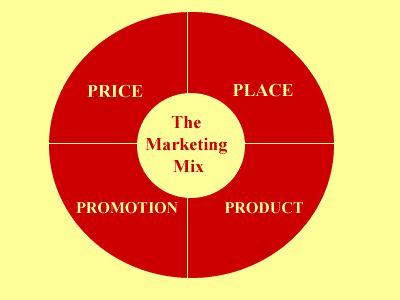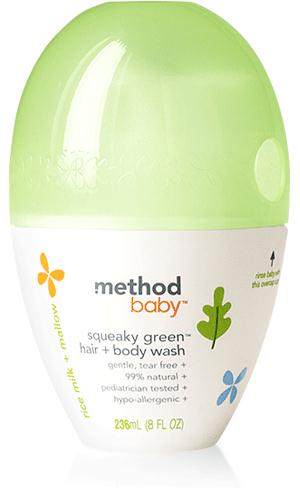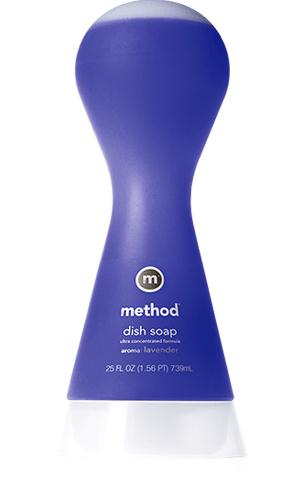 |
Interesting Articles about Popular Topics |
|
|
Dave Carlson - December 10, 2008 There are multitudes of strategies to successfully market different products and services. Each successful company must develop strategies to create a unique and effective marketing mix for their products or services. The seven components of a marketing mix are: product, price, place, promotion, people, physical evidence, and process. Just as an artist is not required to use all colors available on her paint palette, neither is a marketer required to use all components to develop a marketing mix. A successful marketing picture mixes the optimal components to develop the most appropriate marketing mix for the situation. Many companies, like Coca-Cola and Wal-Mart, have been successful in adjusting their marketing mix to reach and maintain marketing success in their respective industries. Successful companies have a marketing plan; most plans are formal documents. The marketing plan defines the marketer’s role in the company and may lead to marketing success. “The marketer’s task is to devise marketing activities and assemble fully-integrated marketing programs to create, communicate, and deliver value for consumers” (Kotler & Keller, 2009, p. 22). There are multitudes of strategies to successfully market different products and services. Each successful company must develop strategies to create a unique and effective marketing mix for their products or services. Kotler and Keller (2009) suggested there are four broad types of marketing activities, which are called “the four P’s of marketing: product, price, place, and promotion” (p, 22). The four P’s combine to form The Marketing Mix (see Figure 1), “probably the most famous marketing term” (Marketing Teacher, 2008, ¶ 1). These four elements form the basic, tactical components of a marketing strategy. Marketing Teacher (2008) used the analogy of an artist’s palette to explain how these components can be mixed -- just like prime colors can be mixed -- to form an original blended marketing mix that is as unique as a hand-painted picture. 
Figure 1. Marketing Mix. (Marketing Teacher, 2008, ¶ 2) In addition to the four P’s, Marketing Teacher (2008) observed that some marketing analysts add three more elements (people, physical evidence, and process), to bring the total number of marketing mix components to seven (see Table 1). Just as an artist is not required to use all colors available on her paint palette, neither is a marketer required to use all components to develop a marketing mix. A successful marketing picture mixes the optimal components to develop the most appropriate marketing mix for the situation.
(Marketing Teacher, 2008) A company that both succeeded and failed with their product is Word Perfect Corporation. During the introductory, growth, and maturity phases of product development, WordPerfect ruled the computers of the world word processing use. However, during the transition of the decline of DOS-based word processors and the introduction and growth of Windows-based word processors, WordPerfect got left behind. In 1980, the company started with six employees and annual sales of about $200,000. By 1991, Word Perfect Corporation had more than 4,000 employees with revenues of more than a half billion dollars. More than ten million people used WordPerfect and the company’s net worth was about two billion dollars (Peterson, 1998). In 1993, Peterson (1998) wrote, “WordPerfect Corporation is no more” (Peterson, 1998, p. 115). Keeping up with customer needs and market desires may have allowed Word Perfect Corporation to survive. Moving emphasis to a different product sooner and focusing on promotion may have helped the company stay in business. The cheapest price does not always determine the best-selling product. Caterpillar has been successful using premium pricing and perceived value in its marketing mix. Caterpillar has been successful convincing consumers that their products deliver a better value. “Although the customer is asked to pay a $10,000 premium, he is actually getting $20,000 extra value” (Kotler & Keller, 2009, p. 392). Caterpillar customers pay more for Caterpillar products, because they believe the product will lower their lifetime operating costs (Kotler & Keller, 2009). Wal-Mart concentrates on economy pricing. Their slogan, “Always the lowest price” served them for years until an investigation revealed that slogan was not true. Wal-Mart subtly changed their slogan to “Always Low Prices.” (Quinn, 2000, p. 68). In 2007, Wal-Mart modified the 19-year-old slogan “Always Low Prices,” to accommodate market conditions by promoting “Save Money. Live Better” (Reuters, 2007). Wal-Mart’s marking mix still uses economy pricing. Creative Memories, the world’s leading scrapbook company, puts their network of independent distributors, called consultants, at the head of their marketing mix. Their mission statement includes a promise to “provide profitable career opportunities for those who believe in and want to share the Creative Memories philosophy, values and ethics” (Creative Memories, 2008, ¶ 4). As a former Creative Memories employee, the author saw the exceptional efforts the company takes to support and encourage their marketing channel of independent distributors. Coca-Cola puts brand recognition at the top of its market-mix priorities. “It may be extremely difficult to topple Coca-Cola from its number one position on Interbrand’s annual list of the top one hundred brands world-wide” (Barlow & Stewart, 2004, p. 87). Barlow and Stewart (2004) maintained that brand recognition is critical to a company’s long-term success and that the company’s brand “can become a magnet within the target population the brand wishes to attract” (p. 87). 59% of Coca-Cola’s value “is attributable directly to the value associated with the corporate brand” (Schroeder, Salzer-Mörling, & Askegaard, 2006, p. 38). Southwest Airlines puts they type of people they hire at the very top of their marketing mix. Gerald Arpey, CEO of American Airlines, a primary competitor of Southwest Airlines, expressed his admiration for his competitor in the words, “If you look at Southwest Airlines, and I admire what they do, they’ve been the most successful airline in the industry” (Google review http://books.google.com/books?id=BapojOGVz5cC&dq=southwest+airlines+people&source=gbs_summary_s&cad=0). Libby Sartain, former Southwest Airlines Vice-President of People, said, We spend more money to recruit and train than any other airlines do. We take the time to find the right people to hire, at all levels within our organization, and we spend time training them. We really believe in the notion of “one bad apple.” It’s like a religion here. As a result, our turnover is far less than it is at other airlines. (Gittel, 2005, p. 87) A company that added physical evidence to its marketing mix is Method Products, Inc. This upstart brand carved a niche in the competitive commoditized and traditional household cleaning product business through creative marketing, including unique packaging (Gugajew, 2008). Inc. magazine named Method as “the seventh-fastest-growing private company in the U.S.” (Gugajew, 2008, p. 13). See Figure 2 for examples of Method’s packaging. 


Figure 2. Examples of Method Product, Inc. Packaging. (http://www.methodhome.com/) No one can visit Disneyland without coming away knowing they have experienced immersion in the Disney brand (see Figure 3). Disney has evaluated every appropriate marketing segment and learned how to reach the kid in almost everyone. Schroeder, Salzer-Mörling, and Askegaard (2006) cited Disneyland as a corporate brand that was one of the brands cited by consumers as being associated with pleasurable experiences. Disney alienates the spectator of the park by a distorted and fantasy representation of daily life, through a fascinating picture of the past and the future, of what is strange and what is familiar: comfort, luxury, consumption, scientific progress, technological innovation, superpower, morality. (Schroeder, Salzer-Mörling, & Askegaard, 2006, p. 100) 
Figure 3. Disneyland Marketing Website. (http://disneyland.disney.go.com/) The seven components of a marketing mix are: product, price, place, promotion, people, physical evidence, and process. Companies such as Word Perfect, Caterpillar, Wal-Mart, Creative Memories, Coca-Cola, Southwest Airlines, Method Products, and Disney found unique formulation of marketing mix ingredients to form a marketing concoction that appeals to their specific group of consumers. All of these companies, except Word Perfect, have been successful in adjusting their marketing mix to reach and maintain the elusive golden ring of marketing success in their respective industries. Barlow, J. and Stewart, P. (2004). Branded customer service: The new competitive edge. San Francisco: Berrett-Koehler. Creative Memories. (2008). Our mission. Retrieved December 9, 2008 from http://www.creativememories.com/MainMenu/Our-Company/Mission Gittel, J. H. (2005). The Southwest Airlines way: The power of relationships for superior performance. New York: McGraw-Hill. Gugajew, S. (2008). A method to the creative madness: From chore to experience, a cleaning brand’s meteoric rise to fame. Journal of Integrated Marketing Communications, 2008, 12-18. [Electronic version.]. Retrieved December 10, 2008 from http://jimc.medill.northwestern.edu/JIMCWebsite/2008/Method.pdf Kotler, P. and Keller, K. L. (2009). Marketing management (13th ed.). Upper Saddle River, NJ: Prentice Hall. Marketing Teacher. (2008). Marketing mix: What is the marketing mix? Retrieved December 9, 2008 from http://www.marketingteacher.com/Lessons/lesson_marketing_mix.htm Peterson, W. E. (1998). Almost perfect. Roseville, CA: Prima Publishing. Reuters. (2007). Wal-Mart rolling out new company slogan. Retrieved December 10, 2008 from http://www.usatoday.com/money/industries/retail/2007-09-12-walmart-slogan_N.htm Quinn, B. (2000). How Wal-Mart is destroying America (and the world) and what you can do about it. Berkeley, CA: Ten Speed Press. Schroeder, J. E., Salzer-Mörling, M., and Askegaard, S. (2005). Brand culture. Oxon, UK: Taylor & Francis. |
|||||||||||||||||||||||||||||||
|